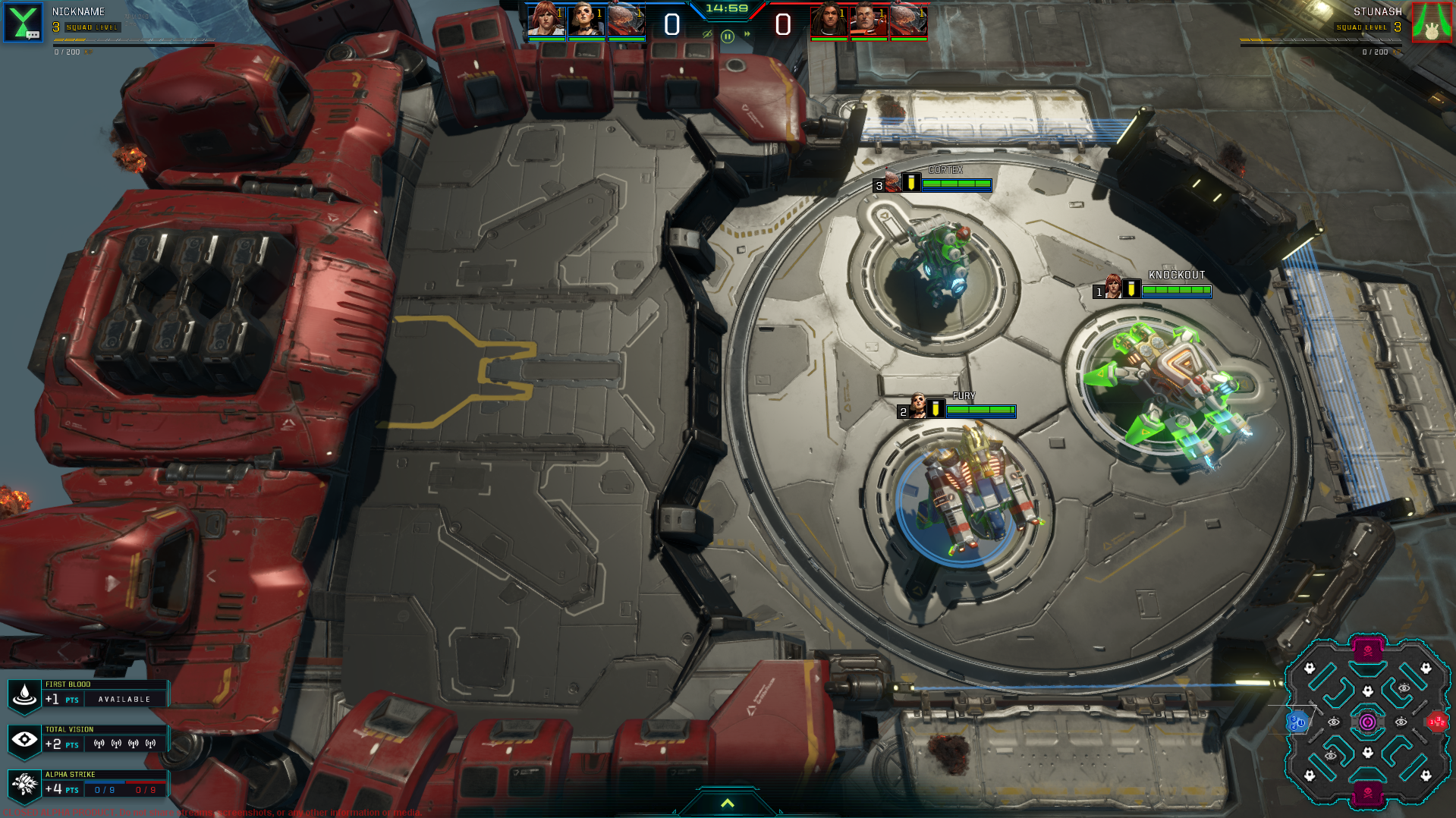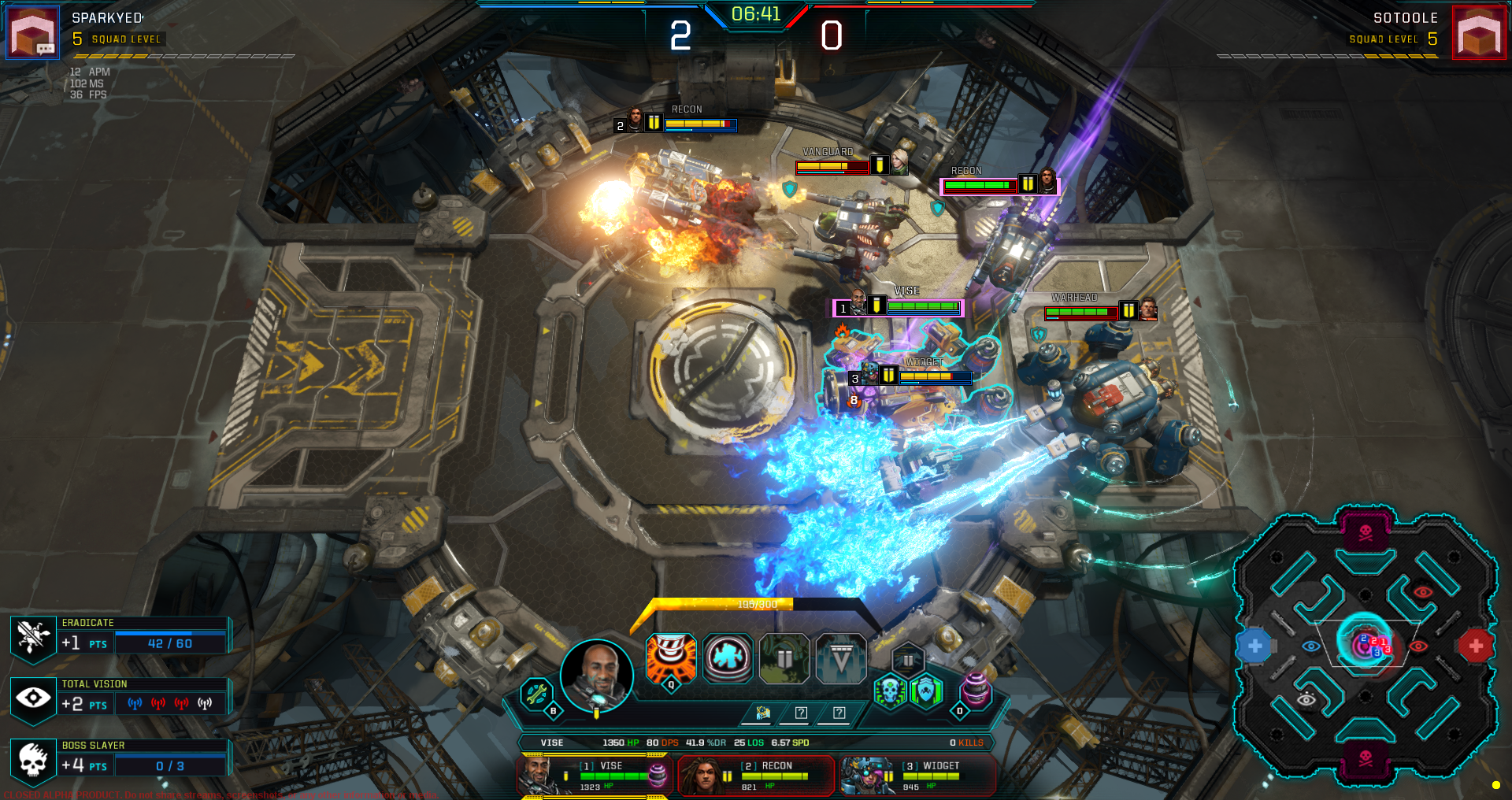Dropzone Impressions - E3 2016

A game becoming an eSport is not designed, it happens when the game is accepted by a community and elevated to the status of ‘eSport’ by that community of players.
Those words are paraphrased from the design team at Sparkypants, the creators of a new RTS-like game called Dropzone. These are wise words as to date no one has successfully engineered an eSport. In fact, the most popular eSports originated from community mods, not game studios. One would expect wise words from Sparkypants as their resumes include RTS heavy hitters such as Rise of Nations, Dawn of War and Company of Heros.
This knowledge and experience has not stopped Stuart Jeff (no, that’s not backwards), and his team from trying to facilitate an eSport. They are focused on building something that has all of the components needed to create an eSport ecosystem.
They have prioritized things like designing a game that is easy to watch, a first class observer system, clear scoring and clear objectives, developer APIs for rich game stats and a design process that not only includes daily play testing, but watching games being played and testing for entertainment.
World Wide Gaming’s lead host and producer Matt Best and I visited SparkyPants at E3 and were given some hands on time with Dropzone as well as a short presentation and Q&A with Stuart.
In Game Impressions

After their presentation and the Q&A session with Stuart, we got to playing the game. Dropzone has quite a few different units you can utilize. You select 3 different units for each match which fall into 3 predictable categories of tank, damage and support. However, they can be heavily customized and given added utility. Each player takes turns selecting their units one after the other, much like a draft phase in League of Legends or DotA2. This opens up the possibility for counterplay, as you can see which units your opponent is selecting as well as which modules they have equipped and make adjustments to the units you are selecting.

When you get into the game, the differences from other real time strategy games become clear. The 3 units you draft are placed on the map at the start and you will not gain any more units. If destroyed by your opponent, your units respawn after a short delay. 
There is also countdown timer, and a score card. You win by having the highest score, when the time expires after 15 minutes. You score points by collecting orbs around the map and dropping them in a goal in the center of the map. You also score points by achieving 1 or more of the three randomly chosen global objectives. They are things like “control all vision beacons on the map” or, “be the first player to kill 50 monsters.” The random nature of these adds a welcome element of excitement to the game, as these objectives are usually very valuable. All of your time is spent controlling these 3 units, and there is plenty to do and many decisions to make.
While you are running around the map killing monsters and collecting orbs to score points your opponent is doing the same, which leads to quite a bit of conflict and keeps things interesting. One must balance securing objectives and stopping your opponent from securing objectives. Doing only one or the other will results in a loss.
Fighting over objectives in Dropzone:

As the game goes on, your units level up and become more powerful, gaining preselected abilities which are used to fight monsters or your opponent, depending on your strategy. Selection of these skills before the game starts is important, as the abilities and your strategy need to be consistent to win matches. 
The end result is a game that feels like a hybrid of RTS and MOBA elements, with some cues taken from traditional sports in the timer and scorecard.
This is all very good and it seems like we are heading in the right direction with a well-designed game, however the thing that left the biggest impression on us was not actually part of the game.
After the initial match between Matt and I, which was great fun but I lost badly, I had to have a rematch. We both had a better feel for the game and played this match on two computers in an open area in front of the studio’s meeting area. This match was intense; the score was deadlocked until the very end. Every single second of the 15-minute match had a sense of urgency. It was fantastic fun. When the match ended and our attention left the game for the first time, we were quite surprised to find that the entire waiting area of the meeting room had filled with spectators watching us play. Some were employees that worked on Dropzone, others were simply visiting, but they were all buzzing with excitement from watching the match. It was proof to us that Dropzone had appeal that extended beyond players to spectators.
In conclusion:
We left Sparkypants with some concerns about Dropzone, specifically unit customization is rather complex and could end up a liability rather than a boon. Our largest takeaway was very positive. Dropzone generates large amounts of energy, excitement and fun. Not only for players but also for spectators. This fact alone, may be enough to propel Dropzone to success.